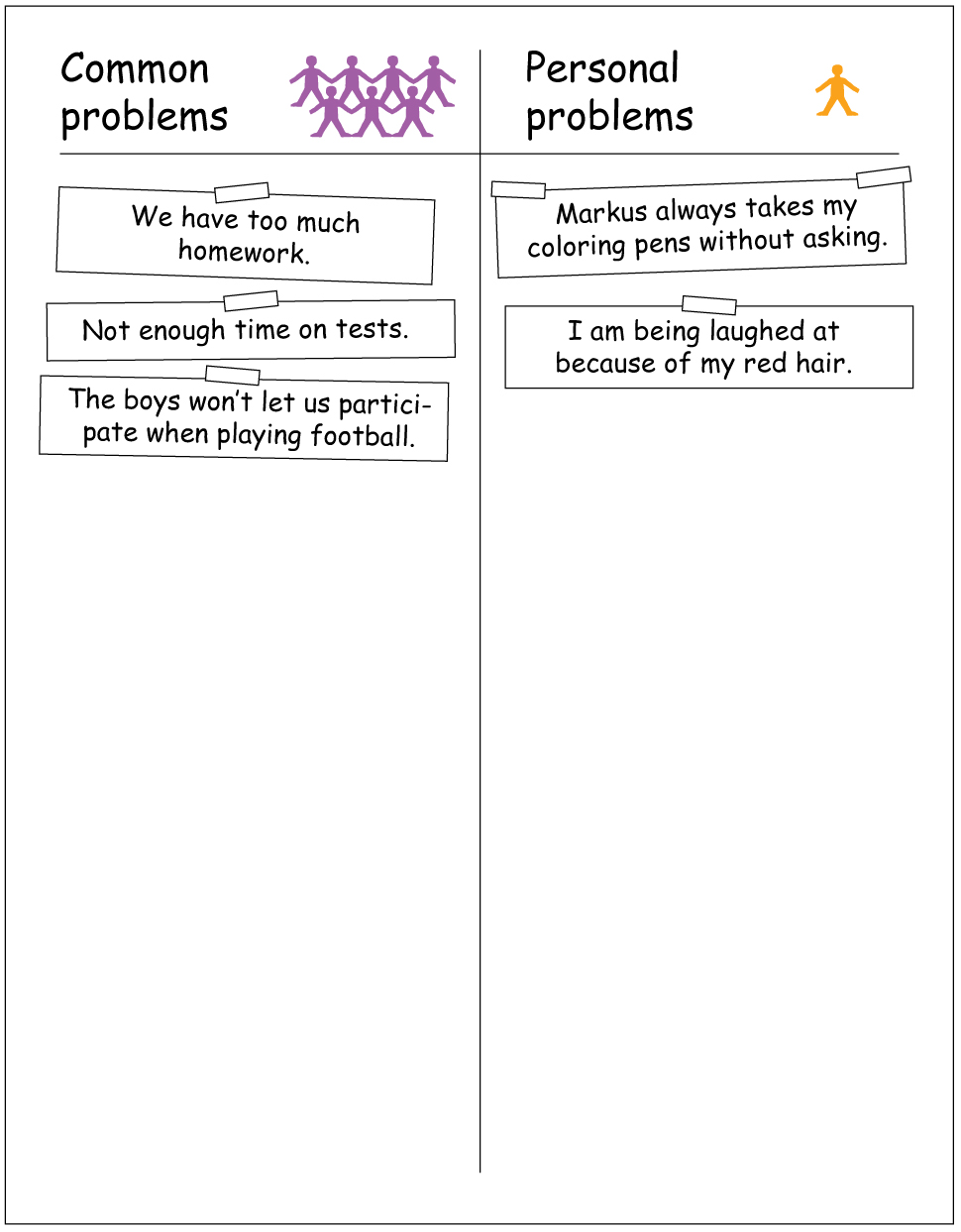Procedure:
- The instructor writes the title “Everything okay! Really?” on the board or a flipchart paper. The students think about the things in their group or their class that are not okay. It is important that the instructor first point out different forms of difficulties:
- Problems in working together with other students.
- Problems between girls and boys.
- Problems with sharing things (e. g. the work space or materials).
- Problems with friendships with others.
- The students write their problems and conflicts on small paper strips and affix these on the board or the flipchart. When all strips are there, the students sit down in a circle.
- The instructor then explains that there are two kinds of conflicts and problems: individual and common. This should be explained with examples: too much noise in the classroom = a common problem;
too little space on one’s own desk = an individual problem, etc.). The paper strips are then reviewed and assigned to the appropriate category. The instructor had previously prepared two large sheets of paper with the titles “common problems” and “personal problems”. When all problems have been sorted, the class discusses which of the problems could be easily solved and what that would entail. The sequence ends with a collection of the easily solvable problems.







